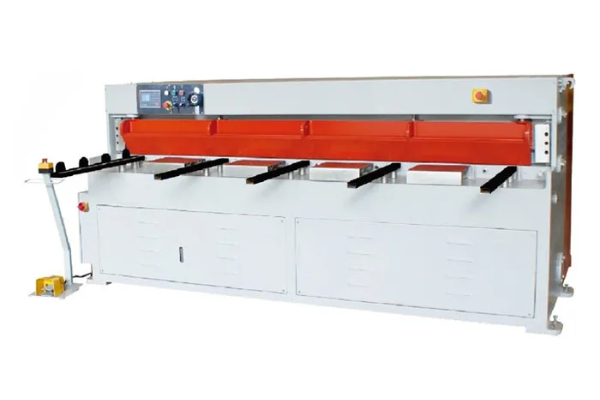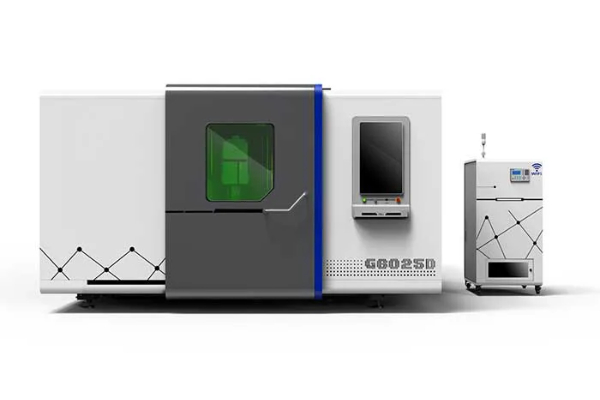
Understanding the Different Types of Press Brake Tooling
- By:Metmac
- 2024-06-06
- 206
Press brakes are essential tools in the metalworking industry, used to bend and shape metal sheets. The tooling used on these machines plays a crucial role in determining the accuracy, efficiency, and quality of the bend. Understanding the different types of press brake tooling is essential for optimizing the performance and maximizing the capabilities of these machines.
Types of Press Brake Tooling
Press brake tooling can be classified into two primary categories:
1. Punch and Die Sets
Punch and die sets consist of two separate components: the punch and the die. The punch is the upper tool that applies force to the sheet metal, while the die provides support and forms the bend. Punch and die sets come in a variety of shapes and sizes to accommodate different bending requirements.
2. V-Die Tooling
V-die tooling consists of two V-shaped dies that clamp the sheet metal between them. The top die applies force to the metal, causing it to bend into the V-shaped groove. V-die tooling is versatile and can be used for a wide range of bending applications.
Punch Design
The design of the punch plays a significant role in the quality of the bend. Punches can be classified into two main types:
Sharp Punches: Have a sharp edge that creates a crisp bend in the metal. They are ideal for sharp corners and precise bends.
Radius Punches: Have a rounded edge that creates a smooth bend in the metal. They are used for bending materials with high ductility or where a radius is required in the bend.
Die Design
The design of the die is equally important for controlling the bend angle and preventing distortion. Common die designs include:
Open Dies: Have a gap between the dies, allowing the material to flow freely. They are suitable for general-purpose bending.
Closed Dies: Have no gap between the dies, preventing material flow. They are used for precise bending and flanging.
Gooseneck Dies: Have a tapered shape that helps to reduce stress and distortion in the material. They are ideal for bending thick or hardened materials.
Tooling Selection Factors
When selecting press brake tooling, various factors must be considered:
Material Thickness: The thickness of the material being bent will determine the size and strength of the tooling required.
Bend Radius: The desired bend radius will influence the type of punch and die combination used.
Material Type: The properties of the material being bent will dictate the tooling material and design.
Accuracy Requirements: The required accuracy of the bend will affect the type and condition of the tooling used.
Production Volume: The volume of parts being produced will impact the cost and durability considerations of the tooling.
By carefully considering the different types of press brake tooling and the factors involved in their selection, users can optimize the performance of their machines and achieve the desired bending results.
-
Advanced Sheet Metal Rolling, Cutting, and Folding Machines for Efficient Fabrication
2025/10/22 -
High-Precision Sheet Metal Bending and Cutting Solutions for Modern Manufacturing
2025/10/22 -
High-Precision Solutions from Leading Sheet Metal Cutting Machine Manufacturers
2025/09/11 -
Reliable Sheet Metal Equipment for Sale to Support Precision Fabrication
2025/07/17
-
Advanced Sheet Metal Rolling, Laser Cutting, and Folding Machines for Precision Fabrication
2025/10/31 -
High-Performance Sheet Metal Bending and Cutting Machines for Modern Fabrication
2025/10/31 -
High-Quality Sheet Metal Equipment for Sale: Efficient Solutions for Modern Manufacturing
2025/10/31 -
High-Performance Sheet Metal Equipment for Sale: Forming and Shearing Solutions for Modern Fabrication
2025/10/22
-
Innovations in Steel Strip Slitting Machine Design and Technology
2024/05/11 -
Improving Accuracy in Metal Fabrication with Laser Metal Shear Machines
2024/05/11 -
Latest Technological Advancements in Rectangular Duct Machines
2024/05/11 -
Integrating Automation with Rectangular Duct Machines for Enhanced Productivity
2024/05/11
-
A Guide to the Latest Innovations in Sheet Metal Folding Machines
2024/11/29 -
Key Features to Consider When Investing in a Sheet Metal Folding Machine
2024/11/28 -
Enhancing Precision with Advanced Sheet Metal Folding Machines
2024/11/27 -
How to Choose the Right Sheet Metal Folding Machine for Your Workshop
2024/11/26






